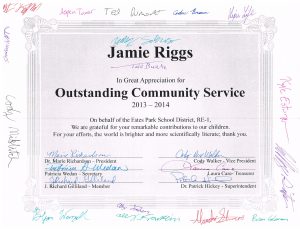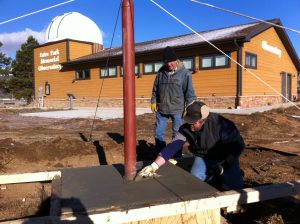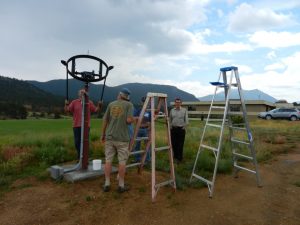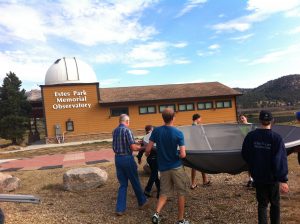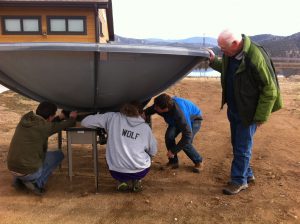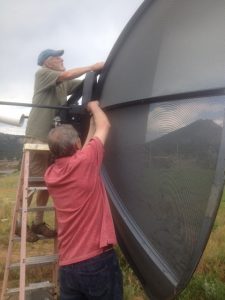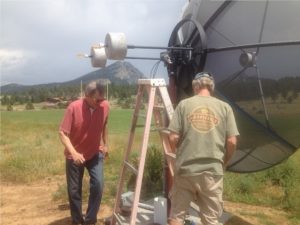Develop and institute a radio astronomy education curriculum for Estes Park Public School (EPPS) students grades 5 through 12. This curriculum extends the existing EPPS astronomy program from the visual frequencies into the radio frequencies.
The Bobcat-engineered radio telescope (BERT) project begins as an engineering activity, progresses through observing program development, and sustains as part of the EPPS curriculum. The project fulfills goals forwarded by the Science, Technology, Engineering, and Mathematics Education Coalition to teach students to be innovative learners.
Students at Estes Park High School (EPHS) will order parts and use blueprints and schematic diagrams to build the high gain, multi-directional, astronomical radio telescope. The plans for this project are an updated and open source version of the Haystack Observatory’s Small Radio Telescope, originally designed in association with the Massachusetts Institute of Technology (MIT). These plans allow a radio telescope to be built with commonly available components and modern computer operating systems.
A variety of processes throughout the cosmos radiate energy as gamma rays, x-rays, ultraviolet light, visible light, infrared light, and radio waves including microwaves. The most abundant element in the universe is hydrogen, which typically radiates energy at 1.42GHz (21cm wavelength). This hydrogen may be mapped using the SRT, including red and blue shifts, which indicate direction of motion. Hydrogen maps and solar dynamics, which also may be observed with the SRT, constitute the major portion of the radio astronomy curriculum to be developed.
Objectives
The outcome of the BERT project is a fundamental understanding of the science and technology of radio astronomy. The main objectives for the BERT project are:
- Introducing radio astronomy (RA2013082900: Estes Park Public Schools, Estes Park High School, 2013)
- Constructing the SRT
- Developing an observing program
- Collecting, analyzing, and interpreting observed data
